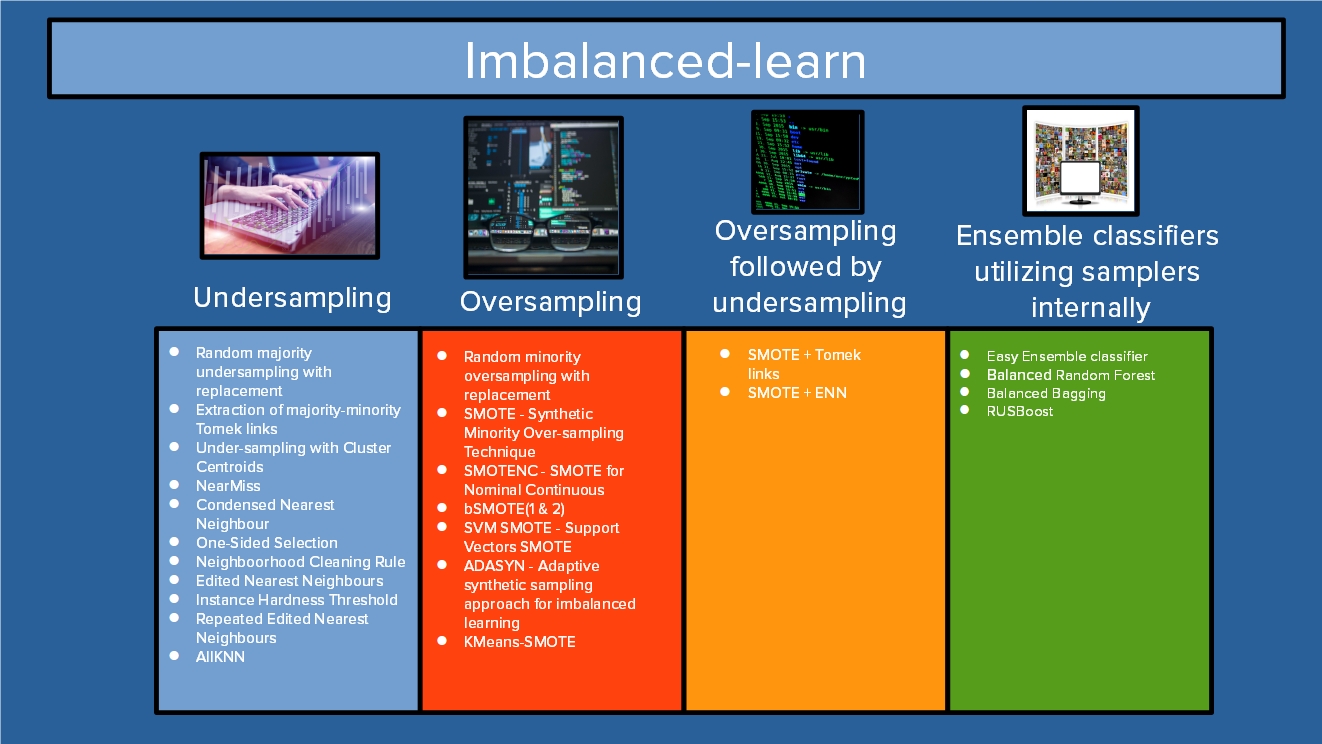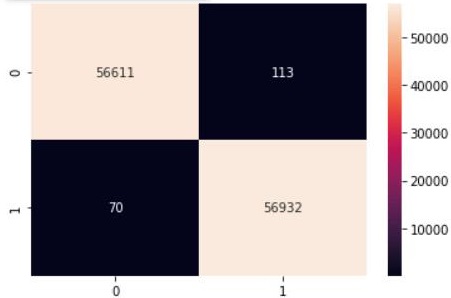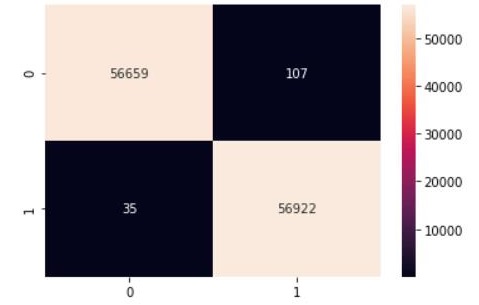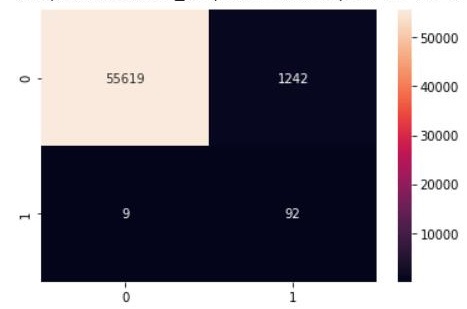Explore Python Libraries: Imbalanced-learn
Jun 17, 2020 • 7 Minute Read
Introduction
As a data scientist working with real world data, at some point in your career you will face the challenge of constructing a machine learning model on imbalanced data. You will need savvy decision making on a number of questions, from selecting the correct metric to ensuring sufficient training of your model on the minor classes. To help you overcome these challenges to constructing an accurate and informative model, this guide will introduce you to the imbalanced-learn library and show you its top three most popular use cases.
Overview of the Imbalanced-learn Library
One of the most promising approaches for tackling imbalanced data is via resampling techniques. Conveniently, the Python imbalanced-learn library offers a great number of resampling techniques and implementations, including the three most useful: SMOTE, ADASYN, and Balanced Random Forest.
Getting started with imbalanced-learn is not difficult, and the package is easy to understand even for data scientists in the first few years of their careers.
Installation
Simply run:
pip install -U imbalanced-learn
That’s it! Imbalanced-learn is installed and ready for use.
For the remainder of the guide, code is available at https://github.com/emmanueltsukerman/imbalanced-learn-tutorial.
Use Case 1: SMOTE
SMOTE stands for “Synthetic Minority Oversampling Technique” and is one of the most commonly utilized resampling techniques. At a high level, to oversample, pick a sample from the minority class (call it S), and then pick one of its neighbors, N. Then pick a random point on the line segment between S and N. This random new point is the synthetic sample you have created using SMOTE. Repeating this over and over you can create more and more new samples to even out your class imbalance.
Now you’ll see how to use imbalanced-learn’s implementation of SMOTE. To illustrate, you will use the Credit Card Fraud Detection dataset, available at https://www.kaggle.com/mlg-ulb/creditcardfraud.
This dataset is highly imbalanced, so it will serve as a great demo set.
Once you have downloaded the dataset, you can see that it consists of 28 anonymized features, as well as time, amount, and class.
import pandas as pd
df = pd.read_csv("creditcard.csv")
df.head()
Place the features into an array X and the labels into an array y.
X = df.drop('Class', axis=1)
y = df['Class']
You will now oversample the minor class via SMOTE so that the two classes in the dataset are balanced.
from imblearn.over_sampling import SMOTE
X_smote, y_smote = SMOTE().fit_sample(X, y)
You can see that the classes are now balanced:
X_smote = pd.DataFrame(X_smote)
y_smote = pd.DataFrame(y_smote)
y_smote.iloc[:, 0].value_counts()
Create a train-test split:
from sklearn.model_selection import train_test_split
X_train, X_test, y_train, y_test = train_test_split(
X_smote, y_smote, test_size=0.2, random_state=0
)
import numpy as np
X_train = np.array(X_train)
X_test = np.array(X_test)
y_train = np.array(y_train)
y_test = np.array(y_test)
Then train and test a simple classifier:
from sklearn import tree
clf = tree.DecisionTreeClassifier()
clf.fit(X_train, y_train)
Finally, see the performance:
from sklearn.metrics import confusion_matrix
import seaborn as sns
y_pred = clf.predict(X_test)
cm2 = confusion_matrix(y_test, y_pred.round())
sns.heatmap(cm2, annot=True, fmt=".0f")
As you can see, by utilizing SMOTE we have ensured that the classifier produces relatively balanced classifications, as opposed to an unsuccessful model, in which the classifier might classify all samples as belonging to the majority class.
Use Case 2: ADASYN
ADASYN takes ideas from SMOTE and builds on them. In particular, ADASYN selects minority samples S so that “more difficult to classify” minority samples are more likely to be selected. This allows the classifier to have more opportunity to learn tough instances. The code for ADASYN is entirely analogous to that of SMOTE, except you just replace the word “SMOTE” with “ADASYN”.
from imblearn.over_sampling import ADASYN
X_adasyn, y_adasyn = ADASYN().fit_sample(X, y)
<snip>
from sklearn.metrics import confusion_matrix
import seaborn as sns
y_pred = clf.predict(X_test)
cm2 = confusion_matrix(y_test, y_pred.round())
sns.heatmap(cm2, annot=True, fmt=".0f")
Use Case 3: Balanced Random Forest
BalancedRandomForestClassifier differs from SMOTE and ADASYN in that it is not a resampling method, but rather a classifier in which the training employs resampling internally. For more info, see Breinman et al., Using Random Forest to Learn Imbalanced Data.
Instantiate the classifier:
from imblearn.ensemble import BalancedRandomForestClassifier
brf = BalancedRandomForestClassifier(n_estimators=100, random_state=0)
Then split the dataset into training and testing:
X_train, X_test, y_train, y_test = train_test_split(X, y, test_size=0.2, random_state=0)
Then fit and predict:
brf.fit(X_train, y_train)
y_pred = brf.predict(X_test)
cm2 = confusion_matrix(y_test, y_pred.round())
sns.heatmap(cm2, annot=True, fmt=".0f")
Conclusion
It’s a great skill for a data scientist to be able to confidently tackle problems with imbalanced data. The library imbalanced-learn supplies you with just the right tools to do so. To delve deeper into the library, I recommend the well-written official documentation for imbalanced-learn available at https://imbalanced-learn.readthedocs.io/en/stable/. Happy learning!
Advance your tech skills today
Access courses on AI, cloud, data, security, and more—all led by industry experts.











